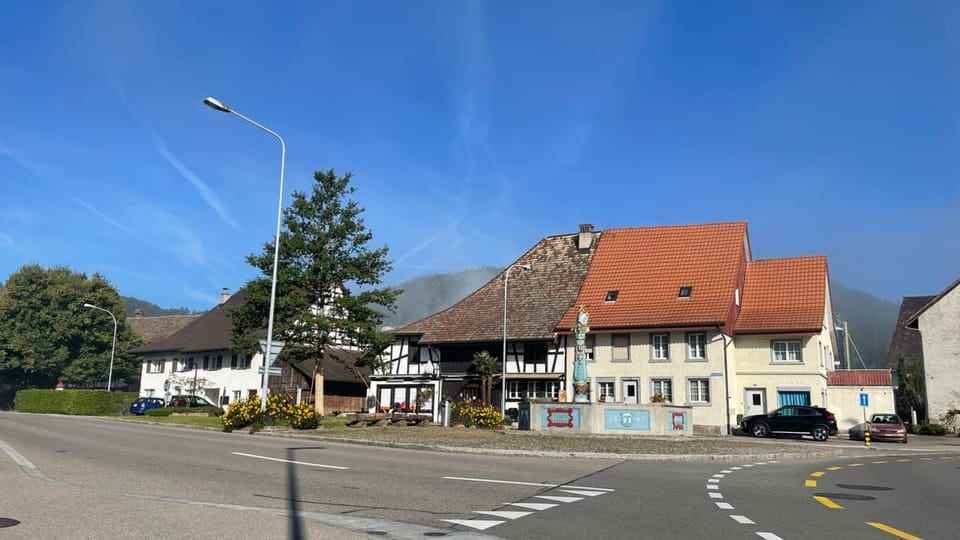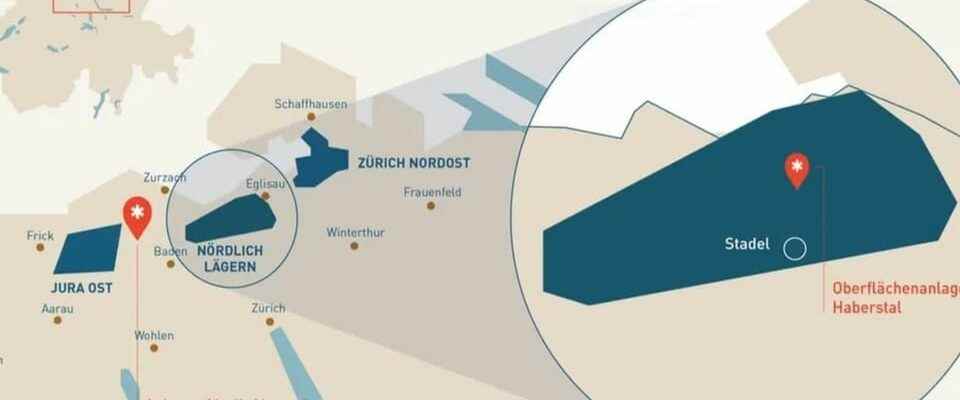contents
The people in Stadel are not happy about Nagra’s decision. But there is hardly any resistance to the nuclear repository.
Now it is clear where the nuclear waste will one day be buried. The deep geological repository for radioactive waste is to be built in the Nördlich Lägern region, more precisely in the canton of Zurich, in Stadel. The municipality with a good 2000 inhabitants is located just a few kilometers north of the city of Zurich.
They are not happy about Nagra’s decision.”Of course, we always hoped that our region would not be chosen as a location,” says Stadler Mayor Dieter Schaltegger, “but that’s the way it is now.” However, the municipal council first wants to be convinced that Stadel is actually the safest location for such a repository, Schaltegger said at a media conference on Monday.
Even in front of the shop in the village center of Stadel, the residents are more relaxed about the decision. “Of course we’re not thrilled. But we also generate waste and need electricity. We therefore accept the decision,” says a woman from Stadel. “This waste has to go somewhere,” adds another Stadler. There doesn’t seem to be much resistance from the population of the Unterland community.
However, one woman is a little worried. She wonders whether this repository is actually safe. “There is a certain danger for our descendants. That scares me.” When asked if she would have preferred the repository to be in another region, she says: “No, I don’t want to burden other people with it either.”
Zurich government assures communities of support
The Zurich Government Council reacted similarly to Nagra’s location decision. The Zurich government did not want the location. However, it is important that this radioactive waste is stored in the safest place, says the Green Government Councilor responsible, Martin Neukom. “If this safest place is with us in the canton of Zurich, then we bear this responsibility.” One wants to support the affected communities as best as possible, emphasizes Neukom.

Legend:
No enthusiasm, but hardly any resistance. The residents look forward to the planned nuclear repository with a certain degree of composure.
SRF
This is also what the Zurich parties from left to right hope for. Because there are still many open questions. The question about the groundwater, for example: “The deep groundwater must not be contaminated by these rays under any circumstances,” says GLP Cantonal Councilor Nathalie Aeschbacher. It is important that you now put all the facts on the table. The Green Canton Councilor Wilma Willi, who lives in the Zurich Unterland, demands one thing above all: transparency. “That’s the most important thing for us, who live in the region.” Willi already called for the procedure to be accompanied by international scientists.
There are still many unanswered questions for the SP. It is particularly important that the radioactive waste can be dug up again at some point, says Canton Councilor Sibylle Jüttner. “That at some point we’ll have the chance to do better or even more useful things with this waste.” Stefan Schmid from the SVP also finds this important. We owe it to future generations. “We don’t know if the material can ever be reused.” The question of compensation for the communities affected is still open, says Barbara Franzen from the FDP. “It is important that this process is tackled now.”
